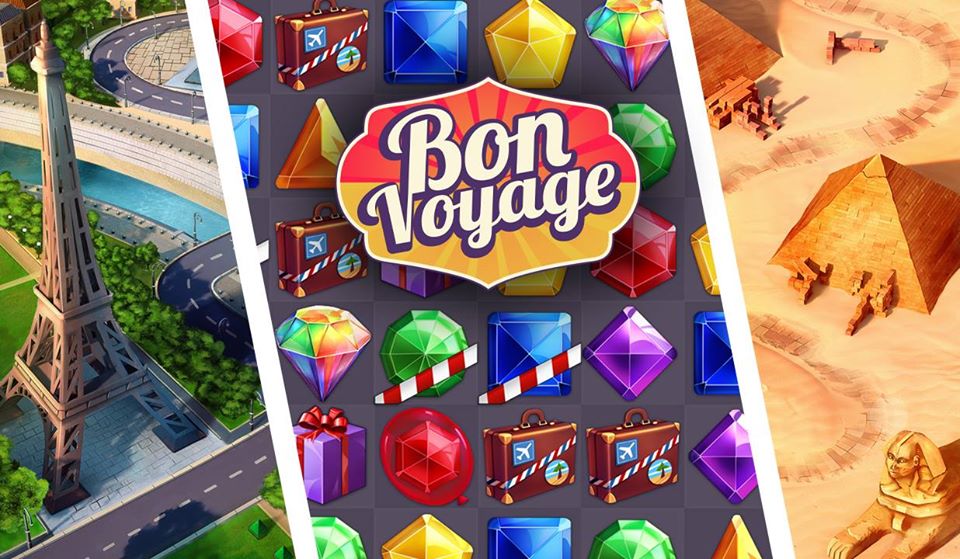
We interviewed Aleksei Dmitriev, CEO of Duck Rockets — a Chelyabinsk-based indie studio that creates games for social networks. In 2017 they released their first mobile game, Bon Voyage, and in the spring of 2019 the game found a publisher.
Aleksei shared his insights with Nitro on the following:
- why small local markets are more profitable than Google Play;
- how to boost conversion in Italy and Turkey;
- why not to rush to break into the Chinese market;
- whether a game’s heroine should wear a burqa to appeal to Iranian users;
- and how to save money on game localization.
Aleksei, how many projects is Duck Rockets currently working on?
Our primary project at present is Bon Voyage, which we've been working on for several years. It was first released on social networks, then on Google Play and in exotic stores such as those of Iran.
The second is our old standby Witchcraft, a Facebook game. This project has ongoing support: we are constantly developing it (even introducing major features) and releasing updates.
When was Witchcraft released?
In 2010. I created the initial version myself. It was like this: I was working for hire, and I wanted to create a game. I began working on the engine, then realized I was going to need art. Art costs money, and where was I going to get it? I began offering the engine for sale, and several buyers turned up. Then clients began ordering their own customizations, and I hired people to handle those orders.
One time we produced a design for a client: the client rejected it, and we decided to use it ourselves for our own game. The studio employees improved my original engine a little, launched the project, began customizing it, and Witchcraft was born.
Remarkably, today — nine years later! — it is still somewhat profitable. The audience for Witchcraft is in the USA, Great Britain, a little in Europe, and a tiny bit in Australia. But mostly in the USA.
As we speak we actually have another project in development, so there are three projects in all.
You have a crime-solving game as well, don't you?
Yes; I just wasn't counting it. Our noir crime solver is our fourth, hobby project. The primary audience is our own office staff and circle of friends. We created it with the idea of one day popularizing it, but then we had to face the facts: a project with lots of text, geared for a narrow audience, is a project with no money in it.
I’ve noticed your translations at Nitro about a little fox, but I never found the game itself.
That was one of our experimental projects. We worked and worked on it, launched it, and then shut it down. The fact is, projects for children are very hard to promote, and even harder to profit by.
So why didn't you make it available to the public?
The problem is that since it's a project for children it has to comply with all the various rules governing all children’s projects. Platforms are tightening their requirements: you have to be constantly updating the game, integrating it with advertising networks, adding age verification... This would be worthwhile if we were seeing organic growth. As it stands, the upkeep required doesn't pay for itself.
A shame! It seemed like a very cute game. The little fox reminded me of the Tamagotchi of my own childhood.
Yes, that was the idea. The fox was cute, but unfortunately he’s a fox without a future.
Tell me how you came up with Bon Voyage. Why did you choose a travel-themed game?
Our previous game was Witchcraft, which was very much a niche project, and this time we decided to target the mass market. And what was the biggest mass market in 2016? Three-in-a-row games. And travel, souvenirs, and selfies are what a major part of our target audience wants.
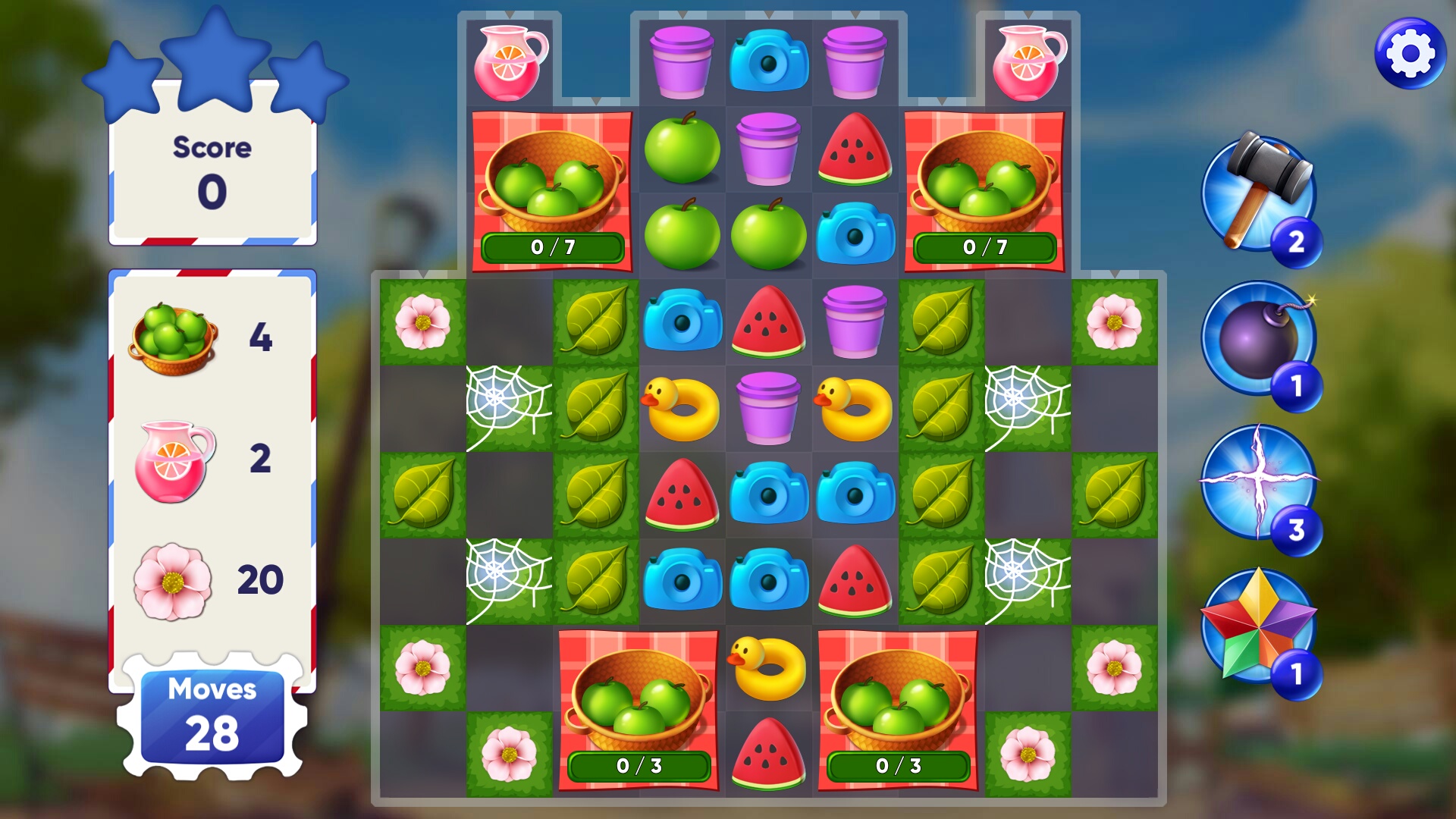
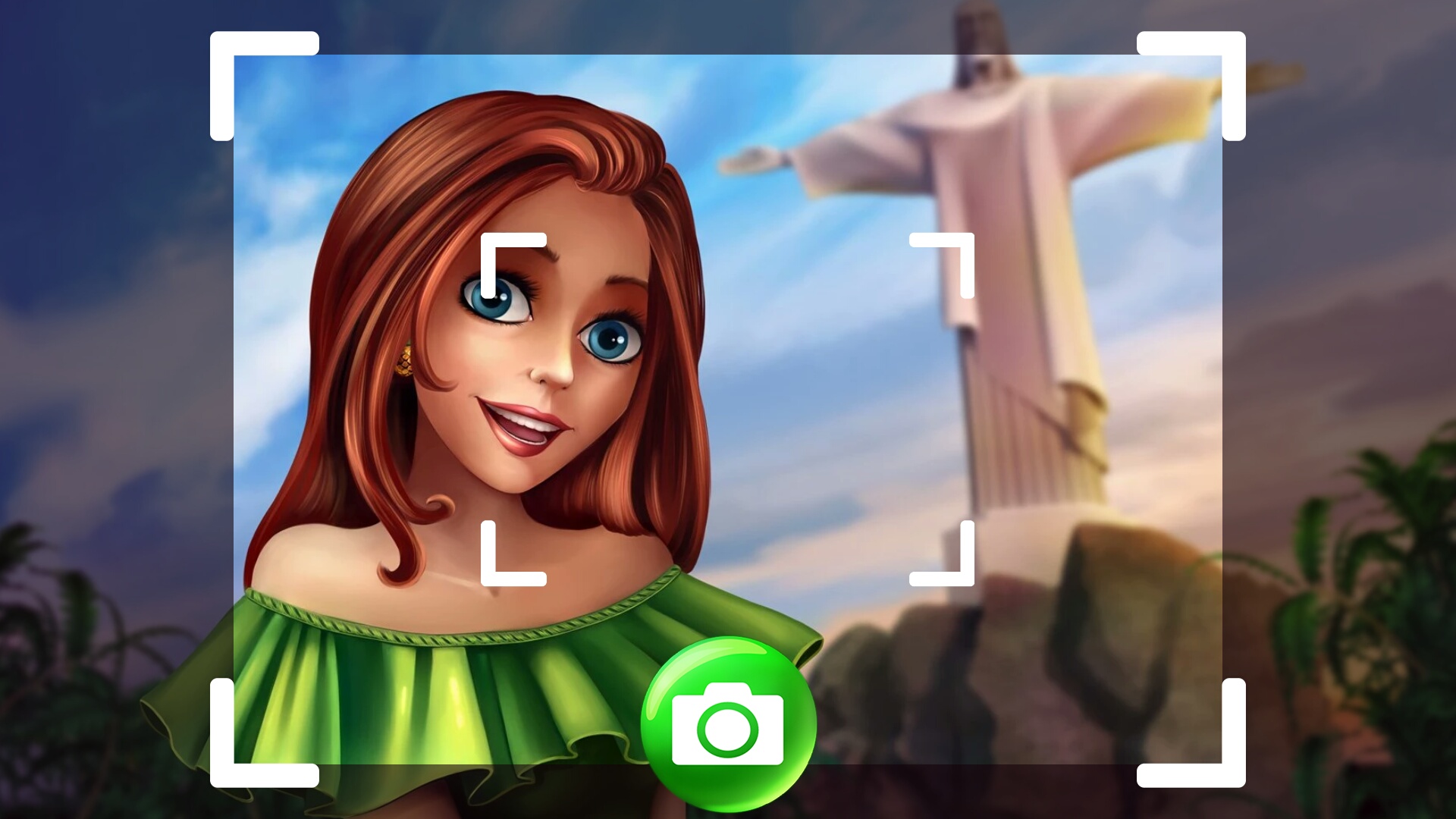
On what platforms was the game first released?
The first version was launched in September of 2016. First the game appeared on VK, then on Odnoklassniki [two popular Russian social networks -N.]. After that it was launched on Facebook and Google Play. It took several months to adapt it for the Android platform.
What made you decide to start with social networks? Was it because making games for social networks takes less time, or for some other reason?
Our reasoning was this: we would make an app based on a multi-platform technical engine, which would then let us create the game everywhere (on all platforms).
On social networks we are able to generate a certain degree of free traffic. For example, when new releases appear on VK, they draw people. Odnoklassniki also has a catalog of new releases. This user base enables us to create a sort of soft launch.
Launching a game on social networks is an opportunity to test out the economics, mechanics, and content — to smooth out the rough edges before launching on Android, so that there everything will be perfect from day one.
For the most part the strategy has paid off. We launched on platforms in order of profitability. iOS is next in that regard. We are currently at the stage of testing out the metrics on Google Play, to ensure that there’s a good basis for moving to the App Store.
Can you share any of the game's statistics?
I can't divulge any numbers, unfortunately, except those publicly available. Bon Voyage has had 500,000+ downloads, primarily in Russia and the CIS countries. This could be because we are a Russia-based company and many users originate from social networks where we are present, so that we see the largest influx from there.
What can you tell us about profit on social networks?
As far as monetization, the money from social networks is laughable. There simply is none.
Does the game currently pay for itself on Google Play?
It pays for its development, certainly. The next step is to increase the scale.
What’s to stop you from releasing Bon Voyage on the App Store right now?
We can create a build and make the game available in the store, but the question is: what then? How do we continue promoting the game? We need the support of a publisher.
In the spring we found one publisher, but for the time being we've agreed to focus on what we already have — Google Play — and get things moving there. We'll move to iOS once we're successful on Google Play, and that will resolve the matter.
I thought everyone tended toward iOS first. It's considerably more profitable.
Of course, all other things being equal, it is more profitable. But that requires traffic. Where do we get the traffic? This is a question with no answer, if your budget is limited.
A build for iOS will take several months: it takes time, and right now we need to see results.
OK, tell me when you started working on localization of Bon Voyage.
When we started launching on Facebook, or Google Play (I can't remember which), we began translating into the primary languages such as German and French.
We had already had English for quite some time. At first we did the translations ourselves, taking advantage of employees who knew the language well. Today we no longer bother with it: we send our translations into English to Nitro, so as not to take our people away from their work. Besides, it's convenient. I like the fact that with Nitro all you have to do is copy, paste, and get your finished translation. It's very user-friendly.
Best of all, though, is the ability to translate small texts into multiple languages at once. Other companies charge $100 to translate three words into six languages (since the minimum cost for translation into a single language is $10–$15).
When urgent translations are needed, the programmer gives you a text and says, "Could you translate this into six languages ASAP?" and you go, "Aaaaahhh! I have to find translators into six different languages, and I need them now!" It's awful. But with Nitro there's none of this running around in search of six translators: insert text, hit “Send,” and relax. Within five minutes you get an email telling you that translations into three of the languages are already done. That is really nice; I really like it. Practically perfect self-service.
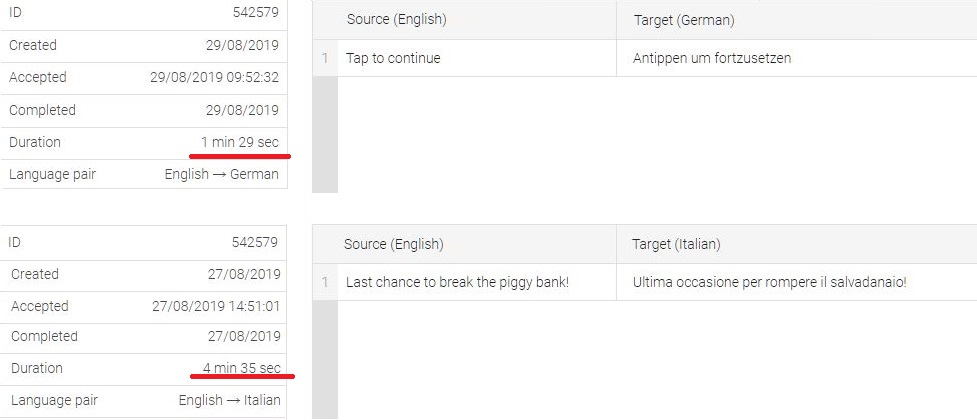
When translations into several different languages are ready in the first ten minutes.
Translating a couple of sentences into ten different languages is classic Nitro. What else do you translate?
Interesting facts about the countries visited. That's part of the bonus players get for passing difficult levels. They’re stored in the Traveler's Log.
For the most part we translate descriptions of the various landmarks, and sometimes additional information for publication on social networks.
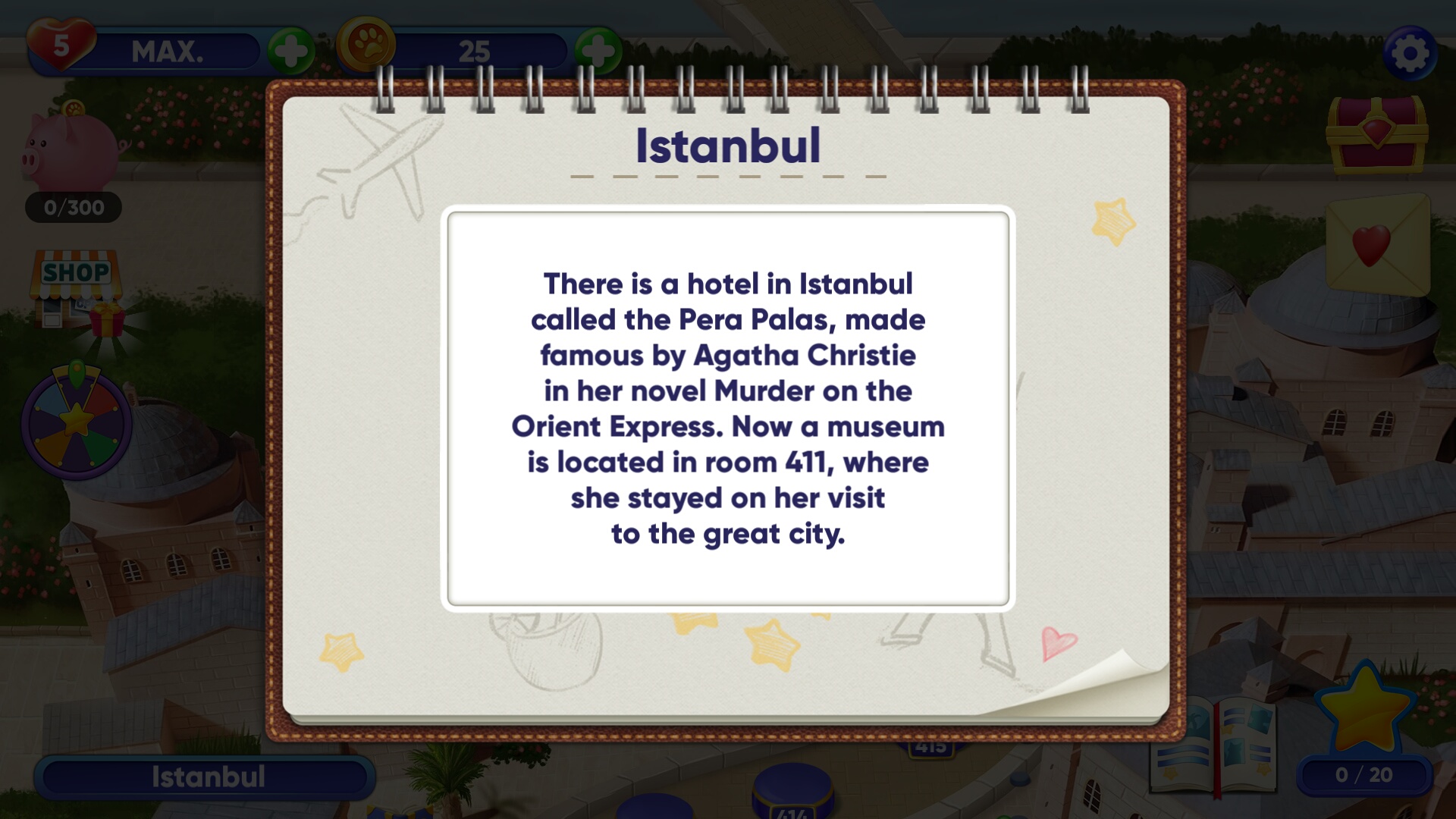
Currently Bon Voyage is available in eight languages: Russian, English, German, Spanish, Italian, Turkish, Persian, and Japanese. What criteria guided your selection of localization languages?
Our logic went like this: "Where do we find the most people and the most money?" Especially the "money" part.
Subsequent languages were added by way of experiment, simply based on where people were coming from. When lots of people began coming from the Play Store in Turkey, we translated the game into Turkish. Next up is probably something like Polish.
And where is the most money currently found? :) What languages have proven the most profitable for you?
English and German. The USA and Great Britain are the best-paying countries. English is the Esperanto of our time.
Your orders with Nitro include translations into Polish, Hungarian, and Dutch. Where are these used?
Those are all texts for marketing materials — screenshot captions, Play Store videos. We took the top 15–20 languages, and we translated marketing texts into them.
Why aren't we in a hurry to localize the game into all 20 languages? We have four blocks of text for each of the 26–27 locales. This makes the translation package rather large and, consequently, expensive. We can't just go and translate it into 20 languages at once. We have to translate it little by little, one language at a time.
So you end up promoting Bon Voyage in other countries for which it has not yet been localized, testing the response?
It works like this: a person goes into an English-language Play Store, sees English screenshots, says "Ugh!" and leaves. Conversion is low; it doesn't draw people.
But when you localize videos and screenshots, conversion increases immediately. Using this logic we did a translation into Turkish. There was no Turkish translation of the game’s store page. People would install it, then leave the game: the game, after all, was not in Turkish, and English is not widely spoken in Turkey.
I added Turkish to Bon Voyage, and conversion took off. And once we localized the game, the retention metric went up; people started staying in the game. We're not seeing mountains of cash yet, but we'll see.
How much has conversion increased, approximately speaking?
Conversion has increased noticeably — first for installations, then for first- and second-day retention. Retention indicators rose by 25%.
We saw something similar with translation into Italian. Lots of people would install the game, but then they would leave low ratings. The reviews were full of complaints: "No italiano!" The Google play listing was translated into Italian, but the game itself was not. Naturally, people were disappointed and left low ratings. When we translated Bon Voyage into Italian, the average rating on Google Play increased.
Tell us about localization into Persian and Japanese.
We appeared in Japanese even before we launched on Google Play. It was in a small local store through Japan-based publishers, but the version was web-based, not a mobile app.
For the most part the publisher handled the localization, but we provide the long-term support ourselves. We no longer support that particular platform, but the game is growing, with new texts being added, and we have to continue translating them into Japanese, since the texts are used in the primary version of the game. It would certainly be odd if the game were partly in Japanese and partly in English.
The same is true of Farsi (Persian). We had a publisher in Iran, which has something like their own version of Google Play, but in Iranian.
That publisher also translated Bon Voyage on their own. Currently we translate additional texts ourselves, and this is generally not a problem: we spend a few dollars with Nitro, and the translation is ready in no time.
These two stores, Japanese and Persian — do they generate any profit?
A little, yes. We spent around $1,000 to add the language to the game, and we've made $2,000–$3,000. Not bad at all.
Being an indie studio, we don't have money to burn, so we try out different approaches. But that was more along the lines of an experiment. Everyone flocks to Google Play and the App Store; no one wants to launch on smaller platforms. Yet there is money to be made where the competition is less stiff.
Small local platforms tend to be used either by the largest companies, which localize their games into every language there is, or by hobbyists, or by locals. But local products are usually pretty boring, and major projects from large companies are few and far between.
What can you tell us about the game markets in Iran, Turkey, and Japan?
Iran's gamers are considerably more active than the others, and in Iran retention is noticeably higher than in all our other locales — even Russia. Apparently there's a deficit of products translated into their native language.
We're not talking sky-high profits, but it's a fact that the people really are active in the game. With Turkish, though, we weren't able to pull the same thing off: apparently there are plenty of games out there in Turkish.
Do gamers in Asia and the Near East have any particular preferences that should be considered if you want to make it on those markets?
Last year at the White Nights conference in Berlin there was a session presented by Facebook on breaking into the Japanese market. They talked about how you need a local publisher to explain what kind of visuals and presentation are needed.
When we translated the game into Japanese we didn't try to come off as Japanese ourselves. The publishers simply created marketing materials for Japanese preferences.
The same was true in Iran. There was only one instance when a do-over was required: there was a figure of a scantily-clad dancer in Rio — the Carnival of Brazil, you understand. We had to redraw her and put some clothes on her. At first we thought we would have to put a burqa on the heroine, but they told us, "No, we're a normal country; we're not some sort of sect. Just get rid of the half-naked women; that's all."
What kind of challenges do you run into in localization?
A classic situation is when the translated text doesn't fit into the space provided.
Another issue is problems with numbering, or where numbers are located in the text. For translations into Farsi, the text is written from right to left.
Japanese is unique in that you send out a perfectly literate text, with commas and all the proper punctuation, and then the translation comes back as a sheet of hieroglyphics, with no indication of where each word begins and ends. It turned out in Japanese word breaks can be placed almost anywhere except before certain specific kanji.
On rare occasions the translation does not match the context. For example, there are multiple possible translations of the word “to save.” In our text the context was "save to device," but it was translated in the sense of “to deliver” or “to preserve.” We now avoid this by providing context for all translations in the form of screenshots. That way the translator sees that he is dealing with a “Save” button, and not a text where “save” could mean anything.
Nitro allows you to attach images to your order to clarify the context.
What do you do when you get a Google Play review that is in a language other than Russian or English?
We have translated ready-made answers into the primary languages supported by our game. More exotic languages are translated using Google Translate, which is built into Google Play. Using it we translate the review, write an answer in English, and run it through Google Translate.
If a person leaves a review in a rare language such as Hungarian, he probably isn't expecting a concise answer with impeccable grammar in the same language.
How do you promote the game, and what promotion channels generate the greatest number of users?
Currently the game is promoted by the publisher. Historically, most people have come to us via organic traffic, and that remains the case to this day. We have made promotional videos in which the footage is the same, but the text is in different languages. For these videos we have translated the text into Italian, German, Portuguese, Czech, Polish, Turkish, and others.
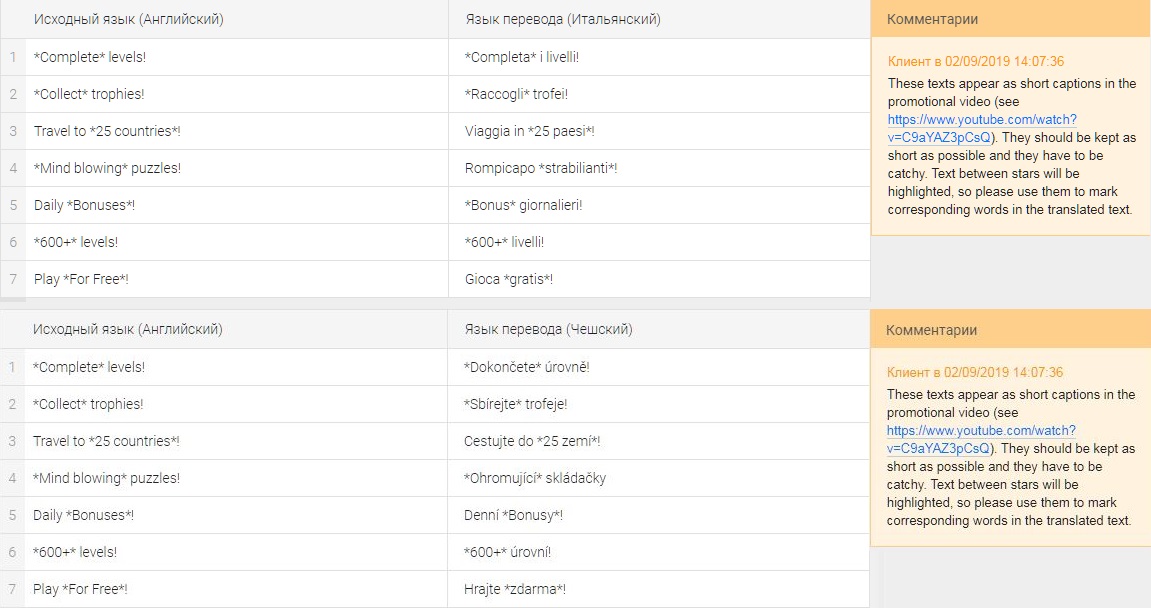
The text for this video exists in Italian and Czech. The video was translated into eleven languages.
Can you name a breakthrough moment when the game's popularity spiked sharply?
There was one such moment, but it was organic traffic, before the publisher came on the scene. At the time we were seeing several thousand new users a day. We even started to wonder: "What are we going to do with all this money?!" But we have no idea what caused it. It would be nice to make that happen again.
Have you considered breaking into China and Taiwan?
You need a local publisher there, and the game has to pass censorship. Today every conference has a separate focus on breaking into the Chinese market. But you can't just go and say, "Hi! We have a game from Chelyabinsk, Russia, and we're here to sell it in China." We're still too small for that.
Our thanks to Aleksei for a most interesting conversation. We thoroughly enjoyed learning how Russia's indie studios are growing and developing. When Bon Voyage comes out on the App Store, come see us and share your success story! :)
Disclaimer:
This article was written by Alconost.
Nitro is a professional online translation service. It was created by Alconost, and covers 35 languages.

I have a question, you and many other people know how to make a social media website, webpage, so why is it that it doesn't go as noticed/famous? That unmotivates people knowing many can do it but won't be successful. But recently I found a guide in this article. There much detailed information, that can help you.